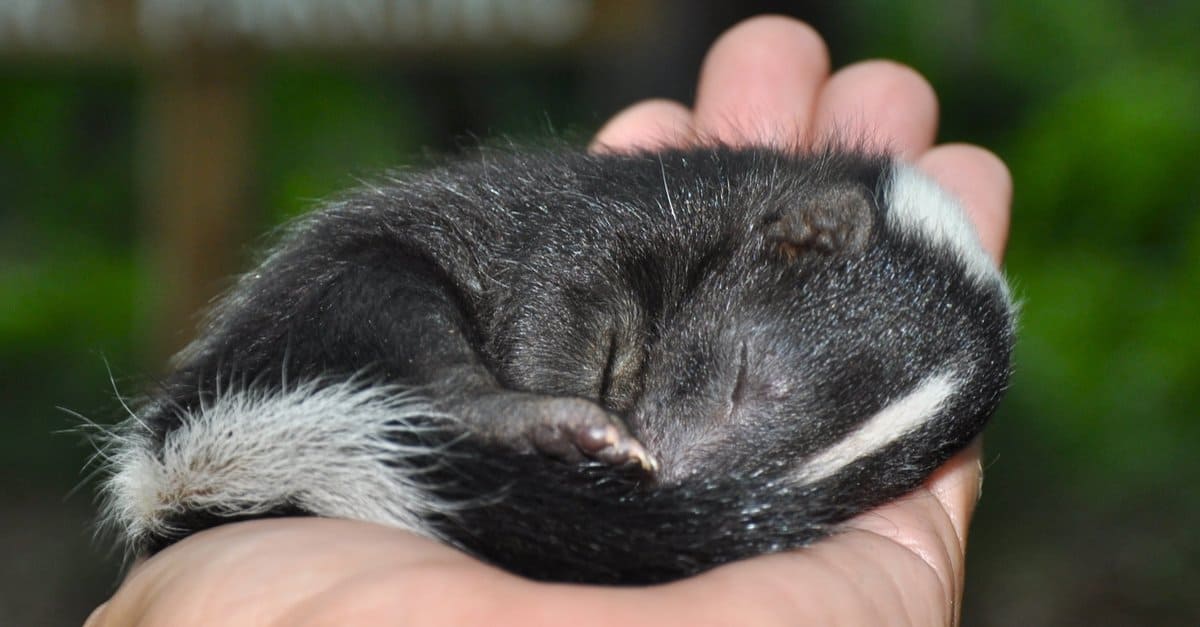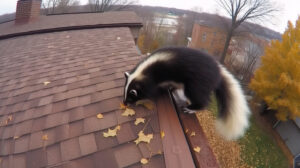Today we’re here to talk to you about skunks and when they have babies. Although skunks are stinky, they are still some of the cutest animals around. Now imagine a little skunk baby and you can queue the long “aw.” So, if you want to see some adorable pics of skunk babies and learn more about when skunks have babies, keep reading!
A Little About Skunks
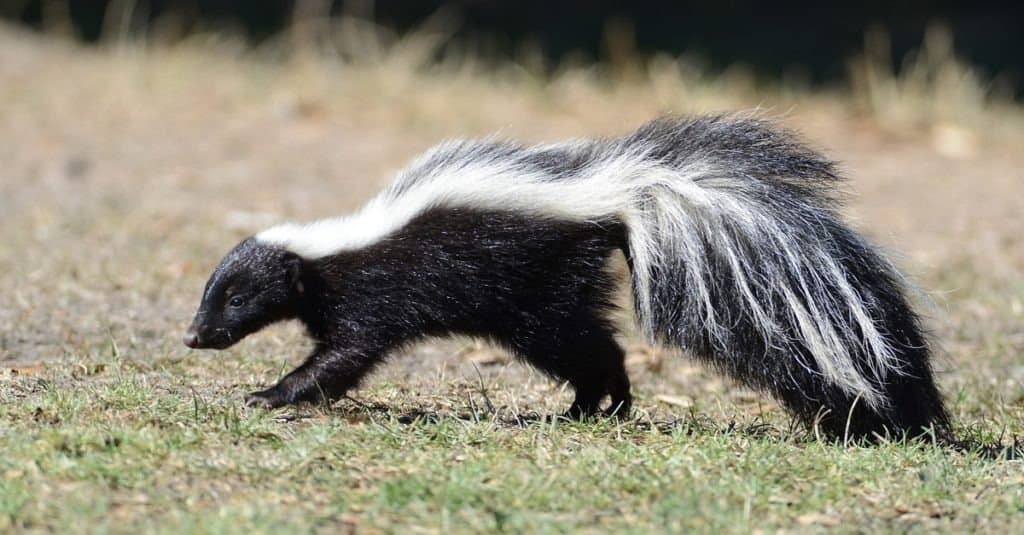
Skunks are most commonly known for their pungent odor, which they release when they feel threatened.
©Matt Knoth/Shutterstock.com
First off, skunks are distinguished by their potent odor, which they deploy as a deterrent against predators. The aroma can stay in an area for days or even weeks, and they can spray up to 15 feet away! Despite their unfavorable reputation, skunks have excellent eyesight and hearing, allowing them to identify potential threats before resorting to their pungent defense mechanism.
Depending on the species you locate, skunk hair comes in a variety of hues, including black and white, brown and white, grey and white, and occasionally even all black or brown! These little creatures also enjoy eating insects like grasshoppers and beetles, but when other food sources aren’t available to them, they frequently turn to fruits instead.
All-in-all it’s safe to say that although we may not always appreciate their smell -skunks really are amazing and adorable creatures with lots of personality packed into such small bodies! And their babies are just an even more compact adorable version that is sure to make your heart melt.
When Do Skunks Have Babies?
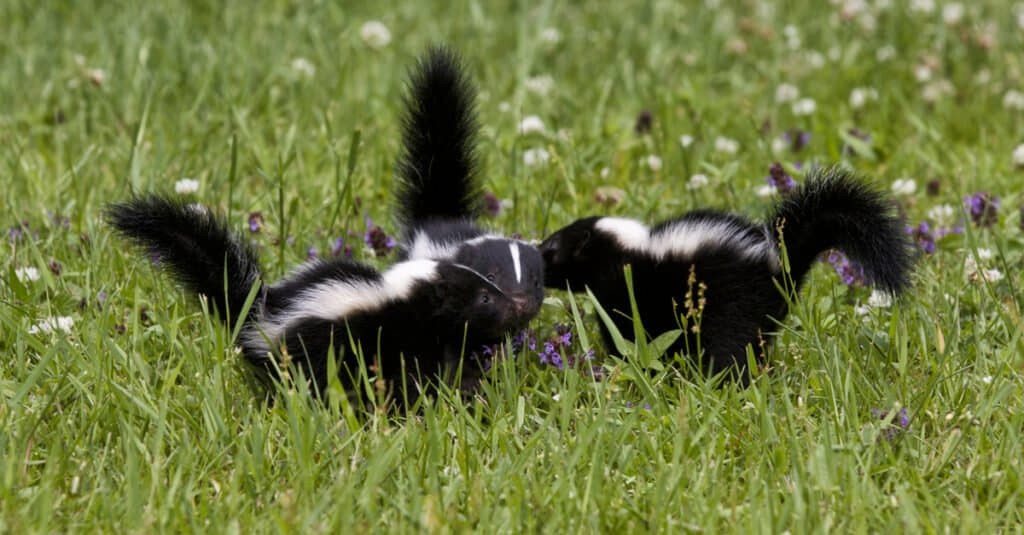
Skunks typically have their babies in May and June.
©Debbie Steinhausser/Shutterstock.com
Skunks are among the most fascinating creatures in nature, and it might be interesting to observe how they reproduce.
The time between February and April is when skunk mating season normally starts. Male skunks will look for female companions during this season and compete with other males for them. Once a pair has been formed, they will stick together until the female is ready to give birth to her litter of kits (baby skunks) in the middle of the summer.
In May and June, skunks normally give birth to their young. Skunk females give birth to litters of 4 to 6 young following a 60-day gestation period. The young are born blind and deaf and have scant fur coats, though these coats soon fill up.
During this delicate time, while they are nursing during their first few weeks until becoming more independent at roughly 8 to 10 weeks old, the mother is particularly protective of her baby. These baby skunks start to become more independent at around 16 weeks old, which means mom can finally take a vacation from all those hungry mouths!
How Long Do Baby Skunks Stay With Their Mother?
You already know how hard a skunk mama works because it takes about 6 months from the mating season until independence. During this time, the mother teaches her young how to survive, including how to dig in the ground and obtain food. Their principal means of food acquisition is digging, and they have huge feet and well-developed claws.
The mother takes her babies on outside excursions after around six weeks. At around six to seven weeks old, the kits begin to venture outside the den, but their mother is usually nearby.
How Many Litters Do Skunks Have In A Year?
The average skunk has one litter each year, although some females may have two. Skunk females typically have litters of 4 to 6 young; however, this number can range from as little as 1 to as many as 9.
What Do Baby Skunks Eat While They Are With Their Mother?
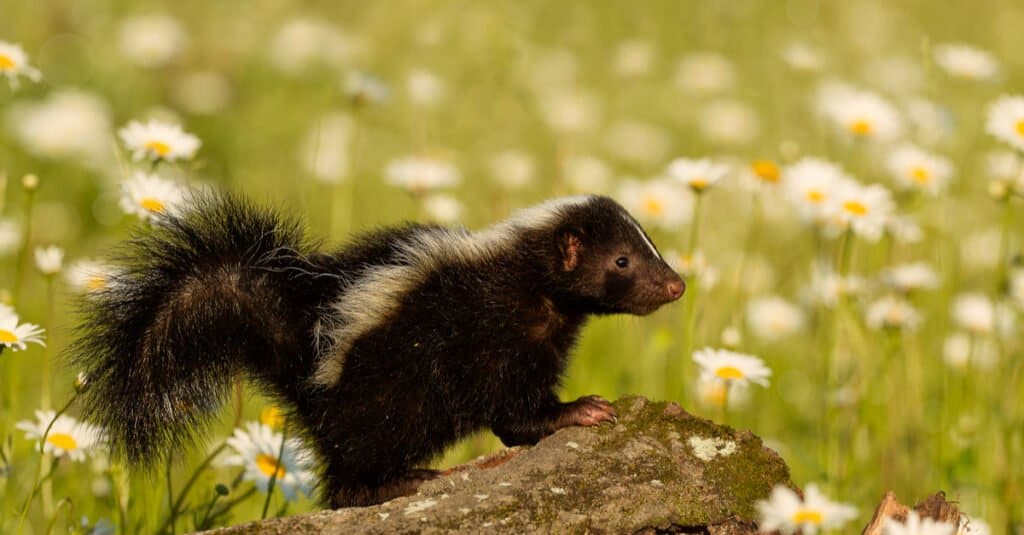
Baby skunks only consume their mother’s milk until they are 6 weeks old.
©Agnieszka Bacal/Shutterstock.com
During the first six weeks of their existence, baby skunks eat only their mother’s milk. They will sleep all day in the den while Mama feeds them and goes out to gather food for herself since they are totally reliant on her.
The young skunks start leaving the den after six weeks and begin eating solid food. Although the type of solid food that baby skunks consume when they are with their mother is not well-documented, it is likely consistent with the mother’s diet.
Skunks will consume anything they can capture or find. Mice, moles, voles, rats, birds, their eggs, and carcasses are a few of their favorite foods. They also enjoy eating bugs such as grasshoppers, bees, wasps, crickets, beetles, and beetle larvae.
How Do Skunk Mothers Protect Their Babies From Predators?
Skunk moms fiercely guard their young and are prepared to spray to protect them from any predators. Skunk mothers frequently change their den to prevent the smell from luring in predators. The mother carries the young, who are under 5 or 6 weeks old, from one den to the next.
Generally speaking, an orphaned baby skunk may appear agitated and may even spray anyone who appears to be a threat since it fears for the safety of its young.
What Happens To Baby Skunks After They Leave Their Mother?
Baby skunks are typically mature enough to set off on their own by the fall. Once baby skunks leave their mother, they are on their own and must learn to survive in the wild. This is why the mother skunk teaches her babies how to find food, dig in the soil, and defend themselves from predators before they set off on their own.
What Are Some Common Predators Of Baby Skunks?
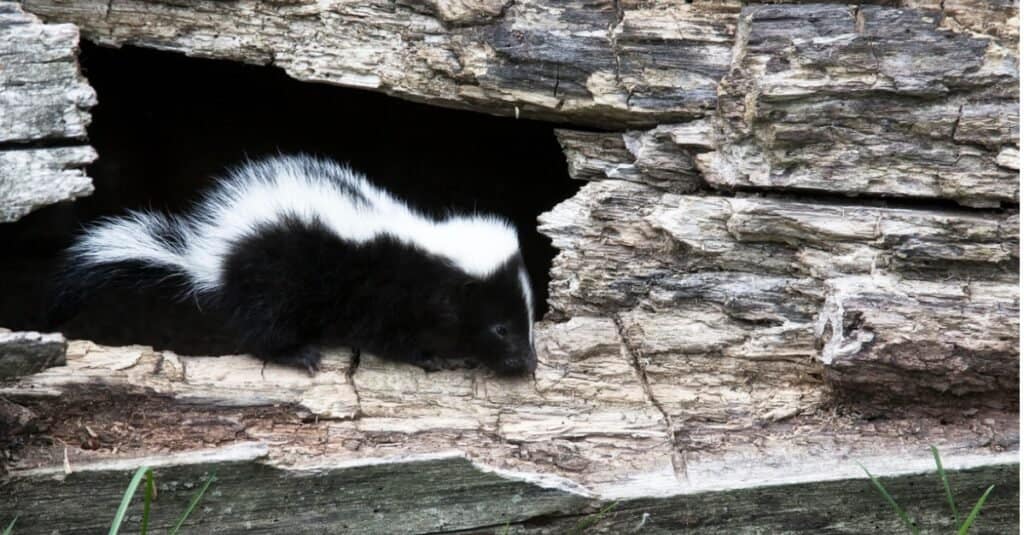
A baby skunk is known as a kit. Sunk kits are vulnerable to many types of predators.
©iStock.com/Lynn_Bystrom
Owls, eagles, foxes, coyotes, and other predators can carry off a baby skunk before a mother can spray, making them particularly vulnerable to these predators. The great horned owl strikes suddenly and from above as well. Certain raptors, such as red-tailed hawks, hunt baby skunks too. Therefore, the mother skunk must make sure the den she chooses is secure from these types of predators.
Do Baby Skunks Spray?
Yes, baby skunks can spray from a very young age, even when they are just a few weeks old. They are born with the ability to spray from their scent glands and can do so when they feel threatened, even if they are still dependent on their mother. However, it’s worth noting that young skunks may not be as good at directing their spray as adults, so they may not be as accurate. It’s important to give skunks, both baby and adult, plenty of space and not to approach or handle them as they can spray as a defense mechanism.
What Should You Do If You Find An Orphaned Baby Skunk?
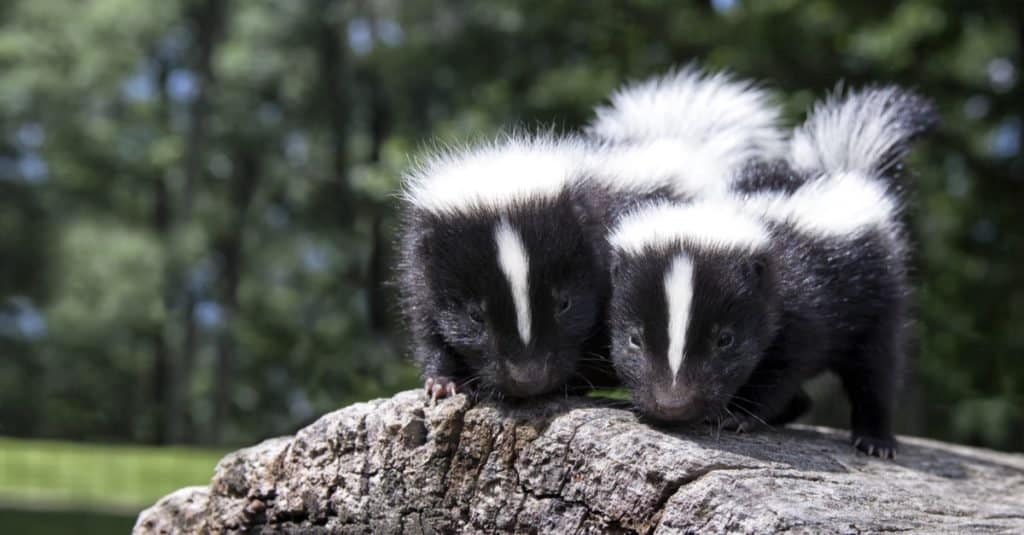
Skunks only live an average of 2 to 3 years in the wild.
©critterbiz/Shutterstock.com
A newborn skunk that has truly lost its mother has to be kept away from kids and other animals in a warm, safe, and quiet environment. When you come across a skunk that might be orphaned, the first thing you should do is wait a bit to see if its mother returns to get it or not. The baby skunk might need to be transported to a wildlife rehabilitation facility for care if the mother does not come back.
What Is The Average Lifespan Of A Skunk?
Skunks typically live for 2 to 3 years in the wild, with an average lifespan of 6 years, however, they can survive for 10 years or longer in captivity. In the wild, striped skunks have a 7-year lifespan on average.
How Many Skunks Die Each Year From Cars?
The exact number of skunks killed by automobiles every year is unknown. However, recent research found that trauma brought on by people killed as much as 50% of all skunks. Skunks are susceptible to traffic accidents, particularly in the late winter when they are most active. The typical longevity of a skunk in the wild is significantly lower than in captivity for this reason, among others.
Thank you for reading! Have some feedback for us? Contact the AZ Animals editorial team.

